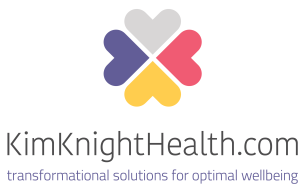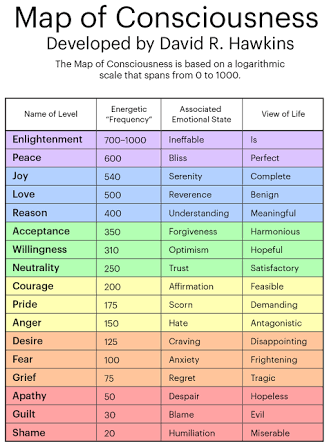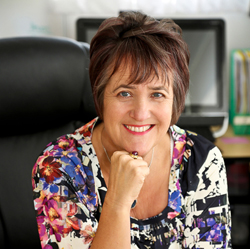“The analogy which often comes to mind for people who have been abused is the beaten dog: if an animal is continually mistreated, even though it wants to love its owner, and its natural instinct is to give unconditional love, the trauma will eventually become too much, and it will withdraw into its shell, ‘flinching’ when another human comes near it, whether that human is well-meaning or not”.
In my clinical practice I mostly work with people who have experienced emotional, physical and sexual abuse in childhood, which later leads them to become chronically ill. These early experiences create deep scars which need to be healed, which is not an overnight job. Usually these people have tried many things before we meet.
I find there is a multi-level approach needed to heal such pain, including clearing emotional and physical trauma, reversing the perpetual ‘stress-fear’ response, learning how to manage people, (especially creating clear boundaries and saying no), learning how to put oneself first without guilt, selfcare, self love and more*.
Today I want to focus on just one aspect of this healing: nurturing physical touch.
When we have experienced physical or sexual abuse (and the emotional trauma which goes along with this), our body will store the memories and trauma in every cell. On a mind-body level we may feel it is no longer safe to be touched, because touch in the past equaled pain.
For example, if a child was often hit, but never experienced loving, nurturing touch, the body-mind will ‘equal touch with pain’ and create a ‘guard’ against further touch. This is part of the body’s natural self-preservation system, whose role it is to protect us and keep us alive.
Until the trauma is healed and cleared, the body will automatically and instinctually do its best to protect us from further pain or damage in a number of intelligent ways.
These instinctual, auto-responses will manifest for example:
- in ‘flinching’ if anyone comes near you or touches you
- an inability to ‘reach out’ to others for support
- feeling uncomfortable reaching out to touch others, even in a non-sexual way
- keeping people at a distance emotionally
- not feeling safe around others, always feeling on edge
- being defensive and ‘prickly’
- living alone because it feels safer
- not having relationships
- fear or discomfort with sexual intimacy
I can personally attest to being an expert in many of these protective strategies!
The analogy which often comes to mind when thinking of people who have been abused is the beaten dog: if an animal is continually mistreated, even though it wants to love its owner, and its natural instinct is to love, the trauma will eventually become too much, and it will withdraw into its shell, ‘flinching’ when any human comes near it, whether that human is well-meaning or not.
And so it is with us humans. We can only tolerate so much pain and abuse. As a child, without support or protection from the very people who are charged with looking after us, eventually we will create our own strategies for survival. Whilst these strategies may serve us at the time short-term, long-term they can create problems, including aloneness, isolation, unhappiness, depression and sickness.
I worked with a client a while back who had been horrendously abused in childhood. Both parents were mean, cruel, unkind and distinctly unloving. His mother would constantly put him down, humiliate and chastise him, making it abundantly clear she had no interest in giving him the loving attention he needed to feel worthy and develop healthy self-esteem, self-love and self-belief. His father would come into his room at night, haul him out of bed and throw him around the room like a rag doll. I felt sick to my stomach when I heard his story, although this type of story is quite common. Even though we can understand that people behave in this way out of their own unhealed childhood pain, it still leaves us having to deal with the consequences.
It was no surprise to me that as an adult, despite being well educated, above average intelligence and trained as a medical doctor, he found himself homeless, penniless and unable to work with severe chronic fatigue. Through working together he learned to recognize that this parental treatment was not normal or healthy, and that holding in the pain from the past had led his body to become ill. Within 6 months, through learning selfcare strategies and emotional healing techniques, his body reversed many of the symptoms and he was well enough to get on with his life.
But coming back to our theme of nurturing touch – at some point we are going to want to go beyond our old protection strategies, and one of the most safe and effective ways to do this is through receiving loving, nurturing, non-sexual touch from someone we feel safe with and trust.
All humans need loving, nurturing touch. It’s an essential need, and if it is neglected, or even worse, we receive abusive touch, we will create compensatory habits to protect us from further emotional or physical abuse.
“Many people who experienced emotional, sexual or physical abuse as a child will find themselves in unhealthy or dysfunctional partner relationships as an adult if they have not cleared the original trauma. For example, they may find themselves being sexually promiscuous because getting attention sexually is the only way they know how to get any attention at all”.
Interestingly enough, many people who experienced emotional, sexual or physical abuse as a child, and therefore did not receive enough caring, loving touch, will find themselves in unhealthy or dysfunctional relationships as an adult if they have not cleared the original trauma. Such is the deep and natural desire to receive human love – we will do whatever we can to receive it.
For example, they may find themselves being sexually promiscuous because getting attention sexually is the only way they know how to get any attention or touch at all.
Or they may find themselves in an unhealthy relationship where they are treated by their partner the same way they were treated by their parents – ie, they are hit, put down, humiliated, punished, undermined etc. This comes about for many reasons (too many to list in this article) and have to do with a feeling of familiarity with this type of treatment, not feeling deserving of anything better, not knowing any better and the energetic attraction through ‘the law of attraction’ to an equally dysfunctional partner.
So what is the way out of this unhealthy pattern of abusive or lack of loving touch?
In my experience, despite the importance and necessity of cognitive emotional clearing therapies, in order to fully heal the physical trauma of loss of healthy touch or physically abusive treatment, we must experience loving, nurturing, healing touch as an adult. In other words, the very thing we have been avoiding (loving touch) is the very thing our body most needs to bring itself back into complete harmony.
One of the reasons we need this type of touch in order to heal is because much of the abuse we experienced happened at a pre-cognitive age. When we originally experienced the trauma, we were too young to speak or think, but just because these faculties were not developed does not mean the pain was not registered inside our body. Indeed it was – at an emotional, energetic, cellular, body level.
These experiences create what is called a ‘limbic imprint’ which is set up in the brain and memorized unconsciously. These limbic imprints can even be set up in the womb and during traumatic birthing experiences. Just because we don’t consciously know they happened does not mean they did not happen or are not there. The body remembers everything!
In order to fully heal, our body needs to be ‘re-programmed’ into experiencing the very thing which was lacking: safe, loving, nurturing touch.
But how do we get this if we are alone, partner-less, afraid to be near people, or in a toxic relationship where we are experiencing even more unhealthy touch?
I’ve found the best way is to find a bodywork practitioner who you feel safe with and explore what it feels like to be touched safely and lovingly in a non-sexual way. It’s not so much the particular therapy which is important here, but rather the ability of the practitioner to be able to understand this theme and give this type of safe, loving touch.
There are many other ways we can rebuild this trust within ourselves, including self-love practices, self care, healthy boundaries and more, but receiving safe, loving touch from another human is absolutely essential, because there is nothing that can substitute caring physical human touch which can only be received from another human being.
Sometimes it can be as simple as someone putting their hand on your back over your heart area. Interestingly enough, this is one of the few areas on our body we cannot reach ourselves – the back of the heart. Try it! Have someone put their hand on your back over your heart area and experience what it feels like. And then do the same for them, because you will know how good it feels!
If it has been your experience and you are still not receiving, enough loving touch, I encourage you to explore healing this way. It can be life-changing and literally give you your life back.
Kim 🙂
* See my free program ‘9 pillars of health mastery’ which explains these different approaches in more detail.













